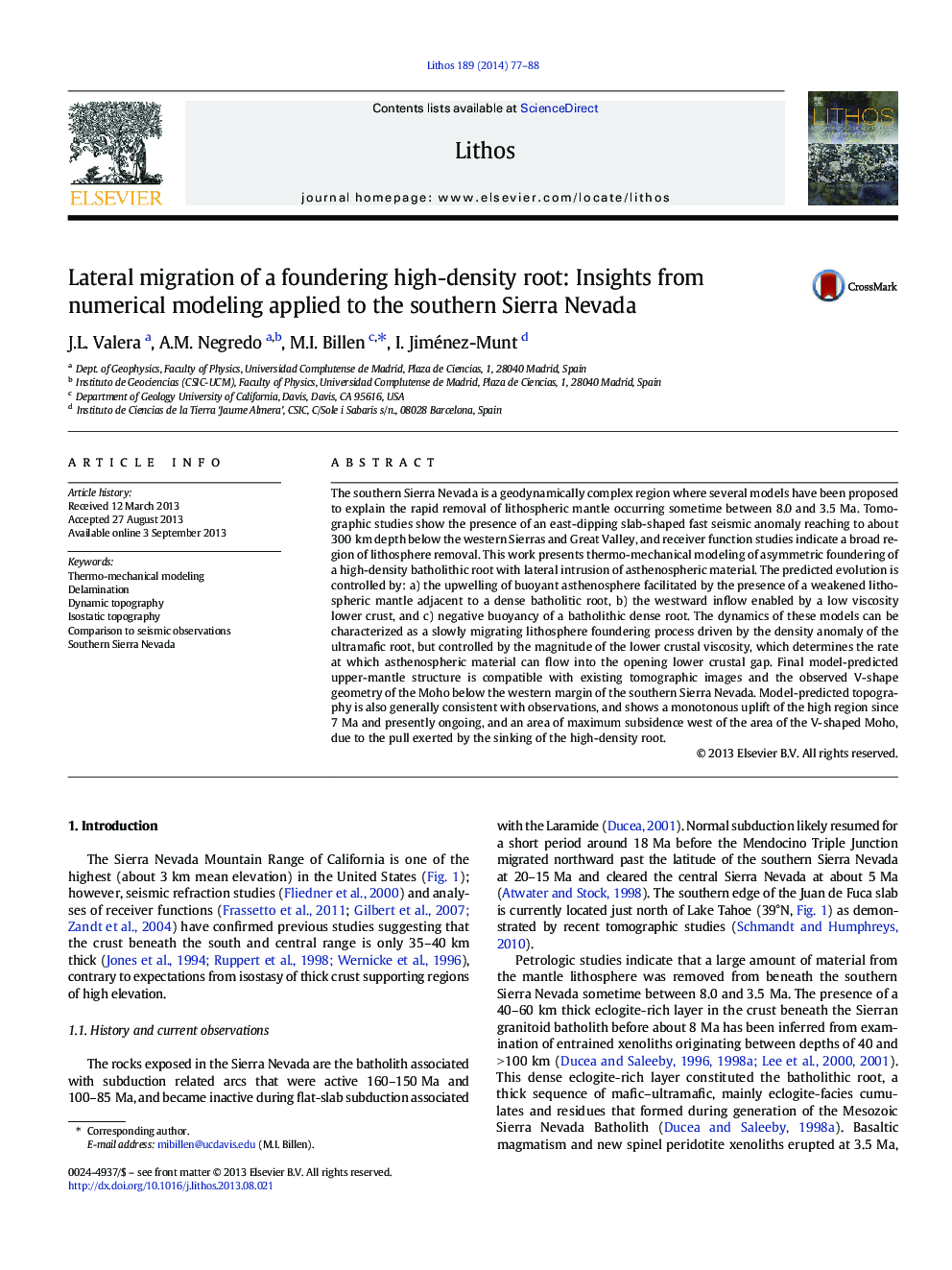| کد مقاله | کد نشریه | سال انتشار | مقاله انگلیسی | نسخه تمام متن |
|---|---|---|---|---|
| 4716105 | 1638681 | 2014 | 12 صفحه PDF | دانلود رایگان |
• 2D models of asymmetric lithospheric foundering with weakened mantle adjacent to a batholith root
• Constrain role of density/viscosity of crustal/lithospheric structures in type and time-scale of dynamics
• Application to Sierra Nevada shows good agreement with seismic and topographic observations.
The southern Sierra Nevada is a geodynamically complex region where several models have been proposed to explain the rapid removal of lithospheric mantle occurring sometime between 8.0 and 3.5 Ma. Tomographic studies show the presence of an east-dipping slab-shaped fast seismic anomaly reaching to about 300 km depth below the western Sierras and Great Valley, and receiver function studies indicate a broad region of lithosphere removal. This work presents thermo-mechanical modeling of asymmetric foundering of a high-density batholithic root with lateral intrusion of asthenospheric material. The predicted evolution is controlled by: a) the upwelling of buoyant asthenosphere facilitated by the presence of a weakened lithospheric mantle adjacent to a dense batholitic root, b) the westward inflow enabled by a low viscosity lower crust, and c) negative buoyancy of a batholithic dense root. The dynamics of these models can be characterized as a slowly migrating lithosphere foundering process driven by the density anomaly of the ultramafic root, but controlled by the magnitude of the lower crustal viscosity, which determines the rate at which asthenospheric material can flow into the opening lower crustal gap. Final model-predicted upper-mantle structure is compatible with existing tomographic images and the observed V-shape geometry of the Moho below the western margin of the southern Sierra Nevada. Model-predicted topography is also generally consistent with observations, and shows a monotonous uplift of the high region since 7 Ma and presently ongoing, and an area of maximum subsidence west of the area of the V-shaped Moho, due to the pull exerted by the sinking of the high-density root.
Journal: Lithos - Volume 189, 15 February 2014, Pages 77–88
